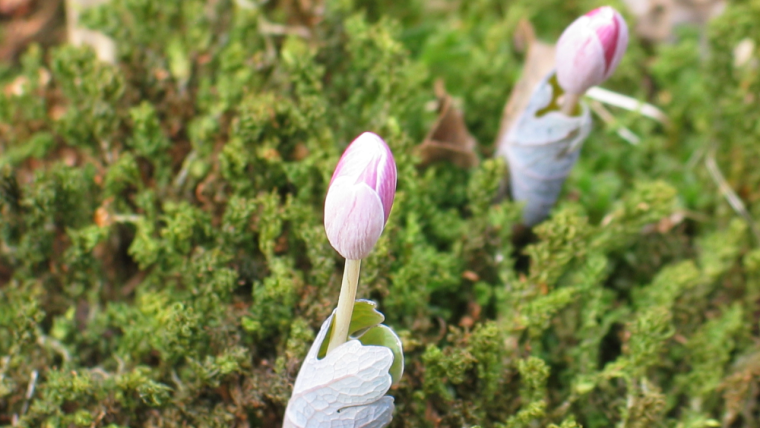Sections

Is the (sunlight) window closing for spring wildflowers in deciduous forests?
Tue, Jul 23, 2024
In many deciduous forests, understory plants such as spring blooming wildflowers depend on a critical period of sunlight before overstory tree leaves block out the sun. Climate change has caused a shift to earlier leaf out in many plants, but not all taxa are shifting at the same rate. Two recent studies found conflicting results about whether wildflowers are advancing their springtime activity in step with overstory trees. The authors of the studies came together to investigate what might be behind the difference in results and found that difference in the types of data used, herbarium data in one and Nature’s Notebook data in the other, along with the geographic and temporal extent of the datasets evaluated, were likely the cause. The study demonstrates the importance of both types of data to explore these types of complex ecological questions. Once the methods of the two studies were adjusted to be more similar, the results indicated that wildflowers in the southern part of eastern North America are less sensitive to changes in temperature than overstory trees and that phenological activity was earlier in warmer years and in warmer locations.

Nature's Notebook observers help pinpoint when to take action against invasive hemlock woolly adelgid
Mon, May 13, 2024
Invasive hemlock woolly adelgid (Adelges tsugae or HWA) has caused widespread decline and mortality in hemlock trees, an important foundation species in the Eastern U.S. One method used for control of this species is the release of specialist predators at two life cycle stages: emergence from summer dormancy in early fall and egg laying in late winter. Authors of this study engaged Nature’s Notebook observers to collect data on HWA. The authors found that emergence of HWA from summer dormancy was consistent, starting at the end of September in each year of the study, while the start of egg laying in late winter was much more variable. Better knowledge of when to take management actions to reduce HWA will help preserve these important trees.

Male and female trees are responding differently to increasing temperatures
Tue, Mar 12, 2024
Dioecy, defined as distinctly male or female individuals in a species, is uncommon in plants, occurring in only about 5% of species. Consequently, our understanding of how this group of plants is being affected by climate change is limited. A group of researchers based at Purdue University in Indiana, USA asked two questions: 1) is the synchronicity in flowering in male and female trees changing? and 2) is the timing of leaf-out and flowering changing at different rates? The researchers found that male trees are advancing their flowering time at a greater rate than female trees. This is potentially bad news for these species; this pattern could reduce pollen transfer from male to female trees and negatively impact reproductive success in these trees. The researchers also found that flowering, which occurs before leaf-out in the species evaluated in this study, is advancing more rapidly than leaf-out. This finding is good news; the increasing temporal gap between flowing and leaf-out means less interference for the transfer of pollen from male to female trees.